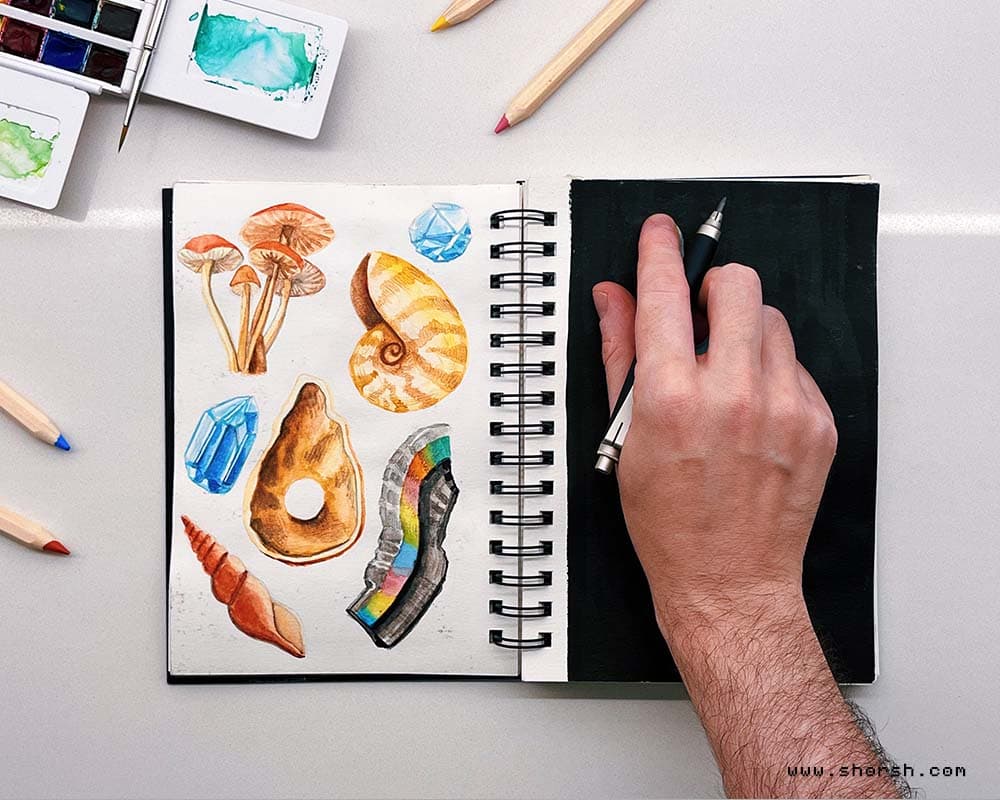Drawing to think: the hands that shape ideas
Discover how drawing shapes ideas, offering clarity, creativity, and genuine inspiration. Explore the profound connection between art and thought!
share this!

“To draw is to sharpen an idea, drawing is the precision of thought”
Henri Matisse
In the realm of creativity and innovation, the connection between art and thought has always been profound. Henri Matisse’s insightful words encapsulate this idea, highlighting the transformative power of drawing on the thinking process. The act of drawing is not merely about sketching lines and shapes; it is a gateway to clarity and the birth of new genuine ideas.
Hand and mind, a match made in heaven:
Matisse’s quote underscores the intimate relationship between the hand and the mind. When we put pencil to paper or stylus to tablet, we engage both our physical and cognitive faculties in a dance of creation. Here’s how this union of hand and mind enriches our thought processes:
1. Observation and attention to detail: Drawing necessitates a heightened level of observation. To depict an object or scene accurately, an artist must carefully examine its details and nuances. This intense focus trains the mind to pay attention to subtleties, fostering a deeper understanding of the subject matter. Such close observation can translate to more meticulous thought processes in various aspects of life.
2. Problem-solving and spatial awareness: When we draw, we are constantly making decisions about proportions, perspectives, and compositions. This problem-solving aspect of drawing exercises our brain’s analytical faculties. It encourages us to consider different angles and perspectives, a skill that can be invaluable in tackling complex problems and generating innovative ideas.
3. Visualization and imagination: Drawing serves as a bridge between the tangible and the abstract. It allows us to visualize our thoughts and imaginings, making them more concrete. Through drawing, we give shape to abstract ideas, transforming them into something palpable. This process can stimulate creative thinking, making it easier to explore unconventional ideas and solutions.
4. Creative Flow and mindfulness: The act of drawing often induces a state of creative flow, where time seems to fade away, and the mind is wholly absorbed in the task at hand. This mental state not only enhances creativity but also promotes mindfulness. As we draw, we become more attuned to our thoughts and feelings, helping us access deeper layers of our consciousness where innovative ideas often lie.
5. Communication and expression: Drawing is a form of visual communication. It enables us to express thoughts and emotions that might be difficult to convey through words alone. The process of translating thoughts and feelings into visual form fosters a more authentic mode of expression, allowing us to communicate our ideas more genuinely.
Cultivating Genuine Ideas through drawing:
As we traverse the intricate journey of drawing, our hands become instruments of expression and our minds vessels of innovation. Matisse’s wisdom serves as a reminder that the act of drawing is not restricted to artists alone. It’s in fact a tool that everyone can wield to sharpen their ideas and think more precisely. That said, let me give you some tips to incorporate this healthy creative habit to your life.
Practical tips for using drawing as a language:
Drawing is a language, far beyond being just a form of artistic expression. That’s why I encourage you to do it. At times, we may feel a reluctance to draw or experience a certain hesitation, mainly due to the pressure of how it will turn out or the frustration with the final sketch. So make sure to:
- Keep a sketchbook handy: Make it a habit to carry a sketchbook with you, so you’re always ready to capture ideas when they strike. It doesn’t have to be anything fancy – a simple notebook will do. If you’re like me, you might hesitate to use a brand-new one. You can also repurpose the ones lying around at home.
- Draw without Expectations: Don’t draw with the intention of making it look perfect; draw as if you were the sole audience. If you spend many hours in front of a computer, consider placing a sheet of paper beneath your keyboard. It’s more convenient than grabbing a notebook when a sudden idea or thought surprises you.
- Embrace Visual Communication: Start communicating with visual diagrams when you need to explain something. Over time, you’ll develop your unique visual language.
Drawing is not just about creating art; it’s rather a way to visualize things, speak your mind, share your ideas, and express yourself. At first, quality is not as important as quantity: sketch, sketch and sketch!. Let your sketches flow freely, and don’t be too concerned about the end result. And finally with more practice, your visual language will become a powerful tool for conveying thoughts, ideas, and emotions.
